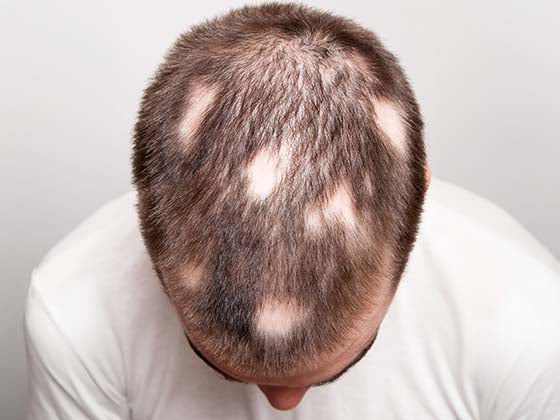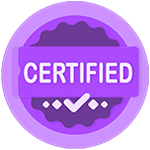Dry brushing, which was primarily used for body exfoliation, has recently gained popularity as a cosmetic treatment trend. Advocates claim it boosts circulation, removes dead skin cells, and creates a healthy glow. But does dry brushing your face truly provide these benefits, or is it just another passing beauty fad? This blog delves deeper into the science and determines whether it is suitable for your skin type.
How Does Dry Brushing Actually Benefit My Skin?

Dry brushing your face entails using a soft-bristled brush to exfoliate the skin in circular or sweeping strokes. While this approach has been used for ages in body care routines, its benefits to facial skin are gaining popularity. Here's how dry brushing may benefit your skin:
-
Gentle exfoliation: Dry brushing contributes to a smoother, more radiant complexion by removing dead skin cells. Frequent exfoliation can help avoid blackheads and clogged pores. Enhance the tone and texture of your skin. Make it possible for skincare products like moisturizers and serums to be absorbed more fully.
-
Boosting circulation: The gentle massaging action of dry brushing can increase blood flow, bringing more oxygen and nutrients to skin cells. This increased circulation can give your skin a healthy, radiant appearance. Promotes cell regeneration and repair. Reduce puffiness, particularly around the eyes.
-
Encouraging lymphatic drainage: Dry brushing can stimulate the lymphatic system, which removes toxins and extra fluid from the skin. This can help reduce puffiness and edema. Help remove pollutants that lead to dullness and breakouts. Support your skin's natural detoxifying process.
-
Enhancing product absorption: By removing the outer layer of dead skin cells, dry brushing helps skincare products penetrate more deeply. This can make active ingredients like vitamin C and hyaluronic acid more effective. Prevent product buildup on the skin’s surface. Improve hydration retention by allowing moisturizers to work better.
-
Promoting a natural glow: Regular dry brushing can stimulate skin renewal and enhance your skin’s radiance. By increasing blood flow and sloughing off dull skin, it leaves your face looking fresher and more vibrant.
-
Potential to reduce fine lines: According to some users, frequent dry brushing can lessen the appearance of fine lines and wrinkles by increasing collagen formation and enhancing skin flexibility.
-
Relaxation and stress relief: The rhythmic motions of dry brushing can be a calming ritual that promotes relaxation and stress relief, contributing to overall skin health by reducing stress-related breakouts and inflammation.
Exfoliate Naturally! Dry Brushing: A Gentle Yet Effective Method

Dry brushing might be the solution if you're looking for a natural way to achieve healthier, smoother skin. For thousands of years, people have used this gentle yet effective exfoliation method to improve radiant skin without the use of harsh chemicals or artificial materials.
Dry brushing is a healthcare method that involves rubbing a soft-bristled brush over dry skin to exfoliate and increase circulation. It is an excellent addition to any skincare routine because it gently removes dead skin cells, unclogs pores, and encourages a healthy sheen. Its benefits are given below:
-
Gentle exfoliation for a smooth complexion: Dry brushing effectively sloughs away dead skin cells, revealing a fresher, more even skin texture. It helps to prevent dullness and improves skin’s natural renewal process.
-
Boosts blood circulation: The brushing motion enhances blood flow, delivering oxygen and nutrients to the skin. Aids in achieving a rosy, healthy glow naturally.
-
Supports lymphatic drainage: Dry brushing stimulates the lymphatic system, which helps to detoxify the skin by eliminating toxins and excess fluid. Reduces puffiness and promotes cleaner skin.
-
Improves product absorption: Dry brushing makes it possible for serums and moisturizers to go deeper for optimal efficacy by eliminating the accumulation of dead skin.
-
Encourages a natural glow: The moderate stimulation of dry brushing increases skin luminosity, making it appear more bright and youthful.
-
Calming and invigorating: In addition to skincare, dry brushing provides a soothing, spa-like sensation that helps ease tension and stress.
Boost Circulation! Experience the Glow

Brushing your face lightly in upward motions improves microcirculation, which allows more oxygen and nutrients to reach skin cells. This yields:
-
A healthy, natural glow: Improved blood flow delivers essential nutrients to the skin, leaving it brighter and more energized. Regular dry brushing helps reduce dullness and revitalizes tired-looking skin.
-
Reduced puffiness: Dry brushing promotes lymphatic drainage, which helps remove toxins and excess fluid buildup. This process can reduce puffiness, especially around the eyes and jawline.
-
Enhanced skin regeneration: With better circulation, your skin’s natural renewal process is accelerated, leading to smoother texture and improved tone. Dry brushing may also help minimize the appearance of fine lines and wrinkles over time.
Ready to Try It? Let's Brush Up on Technique!

Are you eager to give dry brushing a try? Gaining its full benefits—such as smoother skin, improved circulation, and a natural sheen—requires mastering the right technique. To safely and successfully dry brush your face, adhere to these detailed steps.
-
Step 1: Choose the right brush: Selecting a facial brush with soft, natural bristles is crucial to prevent irritation. Look for soft and gentle bristles (avoid stiff body brushes). A comfortable grip that improves control. Facial contours are best achieved with small, round brushes.
-
Step 2: Start with dry, clean skin: Make sure your skin is free of debris, oil, and makeup before you start. For improved exfoliation and stimulation, dry brushing works best on clean, dry skin.
-
Step 3: Make use of light, upward motions: For optimal results, start in the middle of the forehead and work your way out to the temples. Use light strokes to brush upward from the nose to the ears. Lightly brush the chin and jawline out from the middle. For a lifting effect, softly brush upward toward the jawline. Avoid it to avoid irritating the sensitive skin here.
-
Step 4: Keep it short and sweet: To prevent over-exfoliation, dry brushing should only take two to three minutes. Excessive frequency or prolonged use might cause irritation and deplete the skin's natural oils.
-
Step 5: Hydration: After you've finished, nurture your skin with a hydrating serum or moisturizer that contains hyaluronic acid for hydration, vitamin C for brightness, and aloe vera for soothing.
-
Step 6: Use moderation: Depending on how sensitive your skin is, add dry brushing to your routine two to three times a week for optimal effects.
Choosing the Right Brush: What to Look For!

To get the most out of your dry brushing routine, choosing the right brush is essential. Using the proper brush can provide mild exfoliation, encourage blood flow, and avoid irritation. When selecting a facial dry brush, keep the following things in mind:
-
Bristle type: Your facial skin is fragile, so choose a brush with soft, natural bristles to avoid micro-tears and irritation. Look for natural fibers like goat hair or soft plant-based bristles (such as sisal and jute). Avoid using synthetic bristles, as they might be extremely harsh and abrasive. Choose medium-soft bristles to provide moderate exfoliation without scratching.
-
Brush shape: Every part of your face should be easily accessible with a well-made facial dry brush. For more coverage, take into account oval or round shapes. Targeting difficult-to-reach areas like the eyes and nose requires the use of tiny brush heads. Angled brushes offer a more controlled application and a more pleasant grip.
-
Handle style: To assist you retain the right pressure and control, use a brush that is pleasant to hold. Short grips are an option for more accurate motions. Reaching is made easier with long grips, especially around the neck. Gentler application and a more natural grip are offered by palm-sized brushes.
-
Durability & quality: A high-quality brush will last longer and provide consistent results. Look for sustainably sourced materials like bamboo or wood handles. Secure bristle attachment to prevent shedding over time. Easy-to-clean designs to maintain hygiene.
-
Skin type considerations: Different brushes work better for various skin types; for sensitive skin, use ultra-soft bristles and small brush heads to exfoliate gently. For oily/combination skin, use medium-firm bristles to unclog pores and reduce buildup. Dry skin requires soft bristles to exfoliate without removing natural oils.
-
Brush maintenance: Wash your brush once a week with a little soap and water to maintain it clean and functional. Before storing, let it air dry entirely. To avoid bacterial accumulation, do not share your brush.
When to Brush: Before or After Cleansing?

Whether you dry brush your face after cleansing or before is one of the most commonly requested questions. Prior to cleaning is the best time to get the best results.
Dry Brush Before Cleansing
-
Removes dead skin cells first: Dry brushing exfoliates the skin, eliminating dead cells and debris. This enables your cleanser to be more effective and penetrate deeper.
-
Unclogs pores for a deeper clean: Brushing first helps loosen dirt, oil, and pollutants trapped in pores, making it simpler for your cleanser to remove them.
-
Boosts circulation on fresh skin: Brushing on dry, clean skin improves blood flow and lymphatic drainage without the intervention of oils or residue.
-
Prepares skin for better product absorption: Dry brushing prepares your skin for the next steps in your process, allowing serums and moisturizers to absorb more efficiently.
Routine for Dry Brushing
-
Begin with dry brushing: Brush gently in upward, circular strokes for 2-3 minutes.
-
Follow with cleansing: Cleanse with a moderate cleanser to eliminate any loosened particles and freshen your skin.
-
Apply skin care products: To maintain hydration, apply toner, serums, and moisturizer.
Brush After Cleansing
While before cleansing is ideal, some people prefer brushing after cleansing if:
-
They have very sensitive skin and need a damp surface to reduce friction.
-
They want to brush after a long day when the skin is already clean.
When to Seek Expert Advice: Consulting a Dermatologist

Dry brushing has its uses, but it's important to know when to seek expert assistance. You can get the best results safely by speaking with a dermatologist if you're having ongoing skin problems or aren't sure if dry brushing is for you.
Enhancing Product Penetration: Optimizing Your Skincare Routine

Maximizing the absorption of your skincare products is essential for obtaining a glowing, healthy complexion. Proper exfoliating procedures, such as dry brushing, combined with good skincare habits, can help your skin receive the full advantages of your favorite serums and moisturizers. Here's how to improve your regimen for increased product penetration.
-
Exfoliate regularly to remove barriers: Dead skin cells can create a barrier that prevents skincare products from penetrating effectively. Dry brushing improves product absorption by promoting circulation and eliminating dead cells, which can be achieved by incorporating mild exfoliation procedures. AHAs (like glycolic acid) and BHAs (like salicylic acid) are used in chemical exfoliation to break down accumulation and enable deeper penetration. Physical exfoliation is the process of removing surface contaminants with mild scrapes or cleaning instruments.
-
Apply products to damp skin: Moist skin improves absorption because moisture allows active substances to permeate deeper into the skin layers. After cleansing, gently pat your face, leaving it somewhat damp before applying serums and moisturizer. To increase absorption, apply a hydrating spray before harsher treatments.
-
Layer your skincare products correctly: The order in which you apply skincare products significantly impacts their effectiveness. Follow the correct layering technique such as cleanser prepares the skin by removing dirt and oil. Better product absorption results from toner's ability to hydrate and adjust pH. It is best to start with lightweight serums that contain a lot of active ingredients. Moisturizer hydrates and nourishes the skin. Apply sunscreen as soon as you wake up to avoid UV ray damage.
-
Massage products into skin: Applying products with mild massage motions increases blood flow and enhances the skin's ability to absorb nutrients. To improve absorption and avoid pulling, use circular motions that are upward. Think about applying a gua sha or face roller to further enhance product penetration.
-
Choose products with the right molecular size: Skincare products with smaller molecular structures penetrate deeper, while larger molecules stay on the skin's surface. Small molecules that penetrate deeper include retinol, vitamin C, and peptides. Hyaluronic acid and ceramides, which seal in moisture at the surface, are larger molecules.
-
Use occlusives to seal in active ingredients: After serums, apply an occlusive product (such as thick creams or face oils) to seal in moisture and extend the benefits of the active ingredients on the skin.
-
Be consistent with your routine: Long-term success relies heavily on consistency. Regular usage of skincare products causes components to operate more effectively over time and increases absorption naturally.
-
Avoid common mistakes that hinder absorption: Products with an excessive number of layers may form a barrier to absorption. Skipping exfoliation can lead to product accumulation and diminished efficacy. For serums, a pea-sized amount is typically sufficient.
















